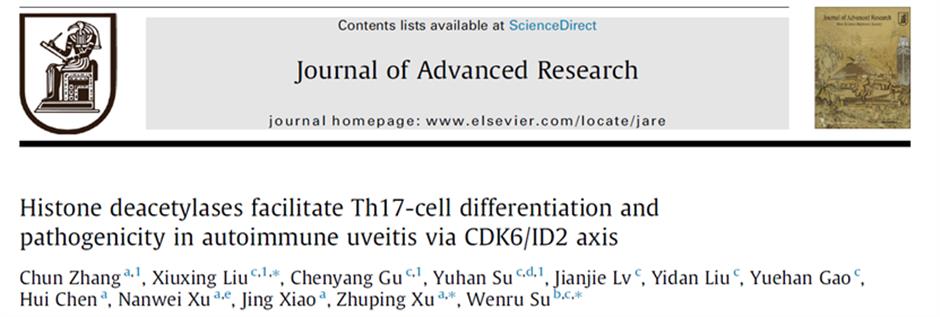
Autoimmune uveitis, swelling of the colored portion of the eyes, is a prevalent ocular autoimmune disease leading to significant visual impairment and is the cause of up to 25 percent of blindness.
Due to its complexity, frequency of relapse, and complicated pathogenesis, treatment for AU is limited to hormone therapy or immunosuppressants, which often have complications such as increased risk of cataracts, glaucoma, osteoporosis, and diabetes. Safer and more effective treatment is in great demand and a clearer understanding to the disease’s underlying pathogenesis is a must.
Experts from the Shanghai Ninth People’s Hospital, after conducting genetic sequencing and animal models, for the first time disclosed that the enzyme histone deacetylases (HDAC) plays a key role in what happens to AU.
Based on that discovery, the experts further investigated the molecular mechanisms of HDAC’s effects on the disease, and conducted experiments to confirm HDAC’s connection with inflammatory gene expression.
Experts said the research was very meaningful, as it had for the first time found patients have higher level of HDAC and explains the mechanisms for AU formation, offering a promising therapeutic strategy.
In the next step, they will carry out larger pre-clinical and clinical research to explore the safety and efficacy of HDAC-targeted inhibitors on AU and other autoimmune diseases, providing patients more promising treatment.
The research was published by the world-leading Journal of Advanced Research.
 Ti Gong
Ti Gong
Experts from Shanghai Ninth People’s Hospital for the first time disclose that the enzyme histone deacetylases (HDAC) plays a key role in what happens to AU.
